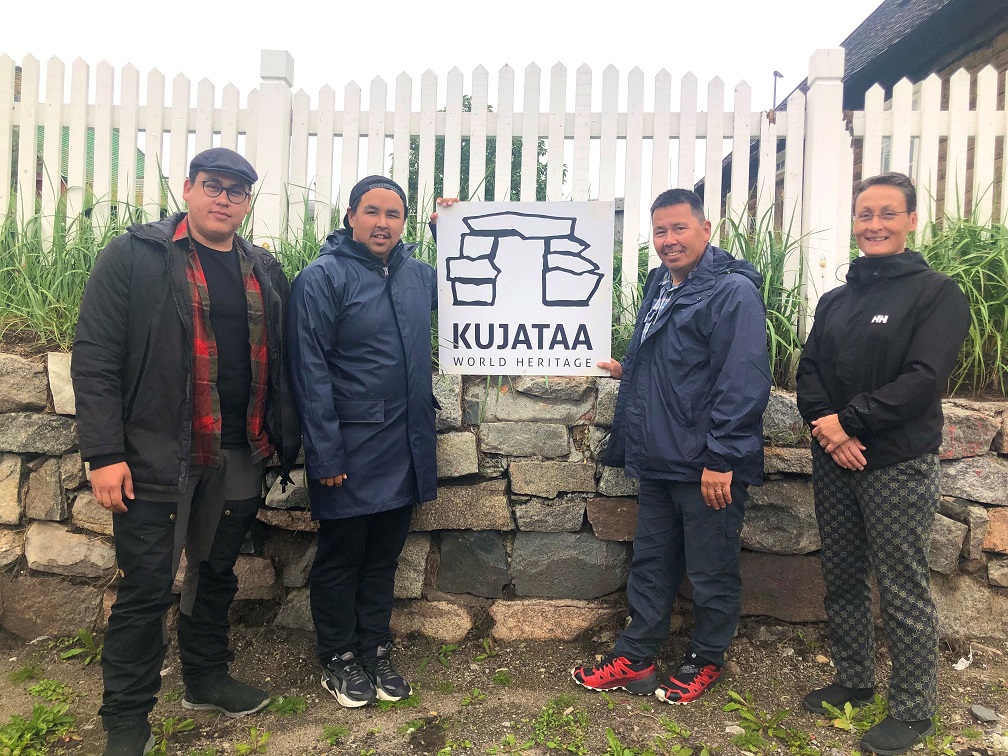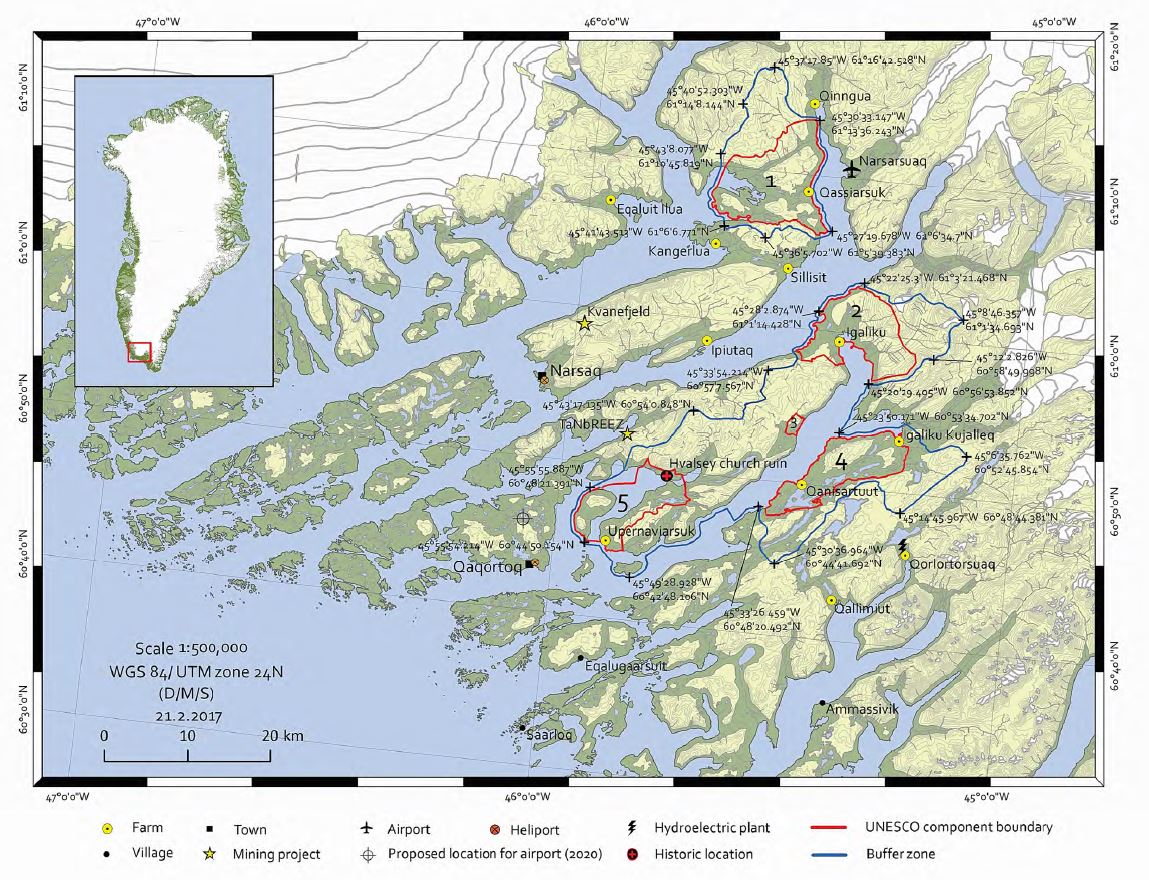KUJATAA - is the world heritage site of South Greenland
The tourist season 2021 in Kujataa World Heritage Site has now ended
The summer went by with a bit more tourists than last year. This is of course because of the pandemic, but still many tourists have chosen to go to South Greenland and the Kujataa World Heritage Site. Here we will talk about what has taken place in Kujataa this year.
This year we put up signs in Qassiarsuk, Igaliku and Hvalsey. Here you can read about both modern farming and farming in the Norse era.
We also installed pontons in Qassiarsuk and Itilleq; when the contractor finds time, the last ponton will be installed in Upernaviarsuk. The pontons will make access easier for the locals, but of course these are also to be used by tourists.
Together with an American organization, World Ocean Observatory, Kujataa has produced an app so you can walk around at the key sites and see what ruins are there. The app is in Greenlandic, Danish and English and can be downloaded to an iPhone or iPad for free.
Activating Arctic Heritage is a four year project, researching in and around the cultural heritage areas in Greenland. This year they have had community days in both Qassiarsuk and Igaliku, presenting about what they have done this summer. It has been exciting for the locals to see their finds. The project will continue over the next couple of years, and in time we can use their results to show what lies beneath our feet – a part the history of South Greenland.

Just like last year, we have educated two more authorized Site Guides; this year it was Aqqaluaq Frederiksen in Qassiarsuk and Suuluaraq Motzfeldt in Igaliku. They both did well and we thank them for their good work this season.
As mentioned above, we have had more visitors this year than last year, but still we only reached about 10 % of a ‘normal’ season. A normal season in Qassiarsuk has about 1,000 paying guests.
The ruin site/reconstructions and Kujataa Information Center in Qassiarsuk had 135 paying guests and Igaliku had 94.
In Qassiarsuk 11,5% of the guests were from abroad, outside the Kingdom of Denmark.
(28% from Denmark or Faroe Islands and 61% from Greenland.)
In Igaliku only 1% was from abroad.
(49% were from Denmark or Faroe Islands and 50% from Greenland)
The ruin site/reconstructions and Kujataa Information Center in Qassiarsuk had more child visitors than Igaliku.
In Qassiarsuk there were 13 children (all from Greenland)
In Igaliku there were only 2 children (from Denmark or Faroe Islands)
These visitor numbers are used to make the destination better. We also look at what effect the tourists have on the areas, so we can preserve ruins, farms and hayfields.
This was only the second year there has been a Site Guide in Igaliku, both of them pandemic years.
The evaluation of the summer season helps give indications as to what we can improve for the coming season. We are already preparing for next year regarding what can we do to make the destinations even better. We look forward to next summer.
Five component areas have been appointed - as a representative part of the cultural landscape, shaped by farming. A landscape where agriculture is represented in two periods - Modern farming and Norse farming.
